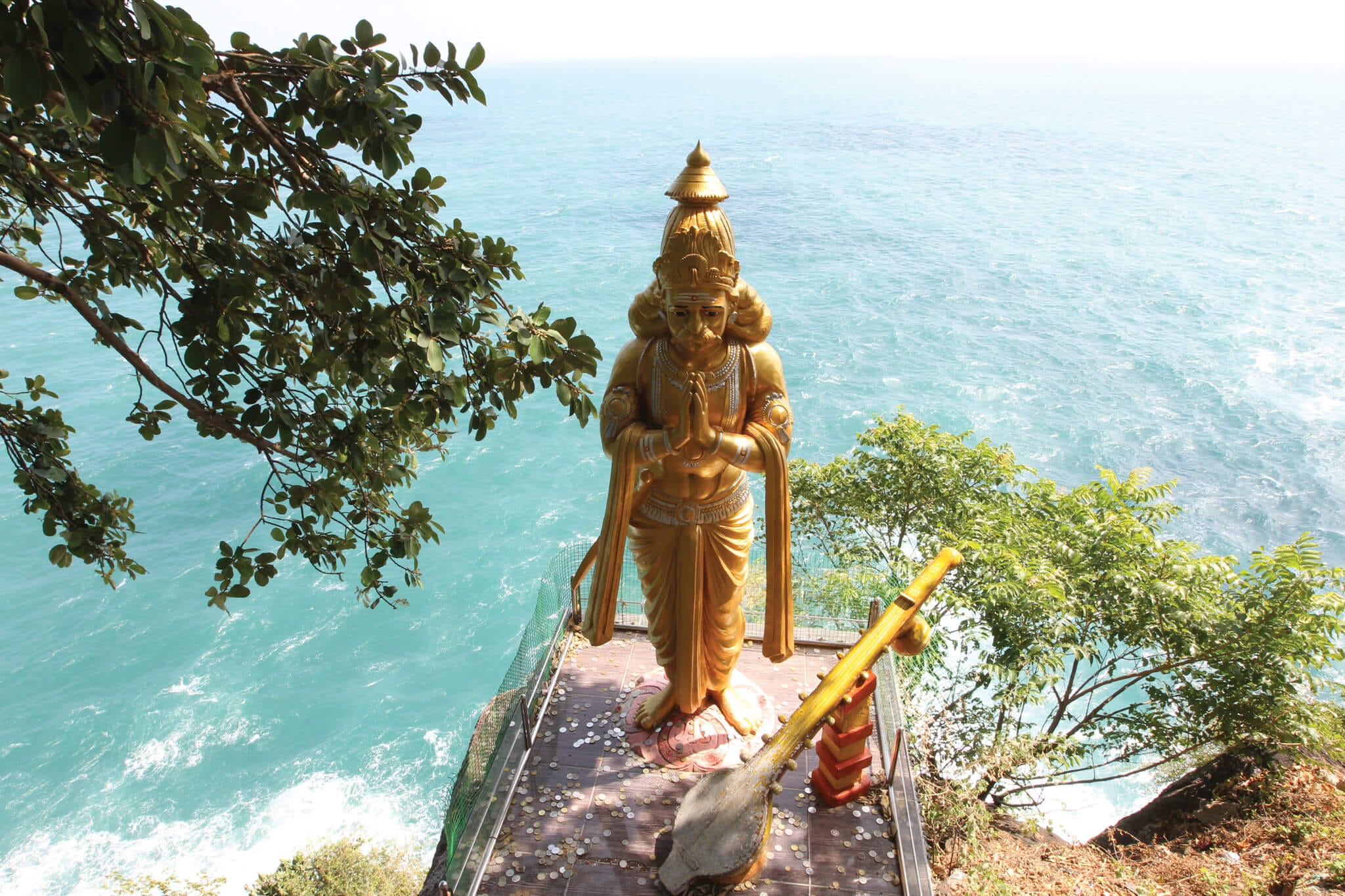Ella Rock
Nestled in the charming town of Ella in Sri Lanka’s central highlands, Ella Rock is an iconic mountain that beckons…
View Details
Koneswaram Temple, perched majestically on a rocky promontory along the eastern coast of Sri Lanka, is a place of profound spirituality and historical significance. This ancient temple, also known as the Thirukoneswaram Kovil, stands as a testament to the island’s rich religious diversity and cultural heritage. In this guide, we will embark on a journey to explore the captivating Koneswaram Temple, uncover its history and cultural importance, and provide practical tips for a meaningful visit to this sacred sanctuary by the sea.
Koneswaram Temple is a spiritual sanctuary that has been a place of worship for centuries. It is dedicated to Lord Shiva, one of the principal deities in Hinduism. The temple’s location, perched on the cliffs overlooking the Bay of Bengal, creates a serene and picturesque setting for devotees and visitors alike.
The temple complex is not only a place of worship but also a center for cultural and religious celebrations. It is a hub for festivals, processions, and rituals that draw people from diverse backgrounds and faiths. The vibrant atmosphere and the harmonious coexistence of various religious traditions make Koneswaram Temple a remarkable symbol of unity in diversity.
Koneswaram Temple’s history is a tapestry woven with threads of legend, myth, and historical accounts. It is believed to have been a significant pilgrimage site for Hindus for over a thousand years. According to legend, the temple was founded by Lord Shiva himself, who manifested in the form of a lingam (a symbolic representation of the deity) at this very spot.
The temple complex has witnessed the rise and fall of empires and the passage of time, making it a living repository of history. It has endured invasions, renovations, and natural disasters, each leaving its mark on the temple’s architecture and cultural heritage.
The architectural grandeur of Koneswaram Temple is a testament to the mastery of ancient builders. The temple’s Dravidian-style architecture, characterized by intricate carvings and towering gopurams (ornate gateways), is a sight to behold. The temple’s inner sanctum, where the presiding deity resides, is a place of deep spiritual significance.
The temple’s location on the rocky outcrop overlooking the sea is particularly striking. It offers breathtaking panoramic views of the coastline and the endless expanse of the Indian Ocean, creating a sense of divine connection with the elements.
Before you set out to explore the Koneswaram Temple, consider these practical details:
Koneswaram Temple is not just a religious site; it’s a place where spirituality, history, and culture converge. As you step into this ancient sanctuary, you’ll feel the weight of centuries of devotion and the echoes of history in every stone and carving.
Koneswaram Temple is a place where the divine meets the earthly, where tradition and history blend into a spiritual tapestry. Whether you’re drawn to its architectural splendor, its cultural importance, or the sense of peace and serenity it offers, Koneswaram Temple promises a profound and enriching experience. It’s a place where the soul finds solace, and the heart finds reverence, by the shores of the Bay of Bengal.